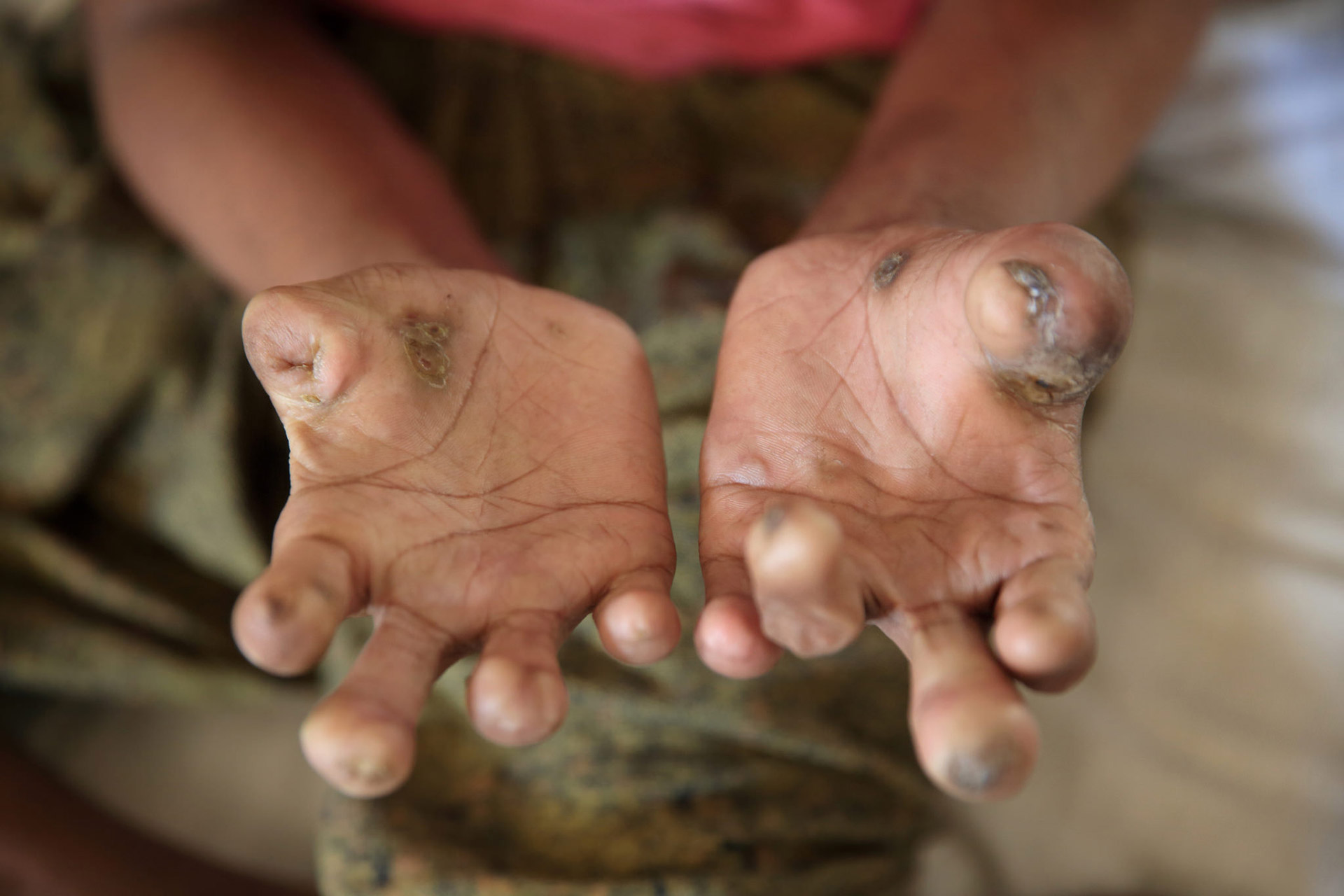does leprosy still exist in the united states Leprosy hands
Leprosy, also known as Hansen’s disease, is a fascinating and misunderstood condition that has intrigued scientists and historians for centuries. In this post, we will delve into some intriguing facts and dispel common myths about leprosy.
Leprosy: The Basics
 Leprosy is an infectious disease caused by the bacterium Mycobacterium leprae. Contrary to popular belief, it is not highly contagious and can be effectively treated with multidrug therapy. While leprosy predominantly affects the skin and peripheral nerves, it can affect other organs as well.
Leprosy is an infectious disease caused by the bacterium Mycobacterium leprae. Contrary to popular belief, it is not highly contagious and can be effectively treated with multidrug therapy. While leprosy predominantly affects the skin and peripheral nerves, it can affect other organs as well.
The History of Leprosy
 Leprosy has plagued humanity for thousands of years, and evidence of the disease can be found in ancient texts and archaeological remains. In the past, people with leprosy were often shunned and isolated due to societal stigmatization, leading to widespread misconceptions about the disease.
Leprosy has plagued humanity for thousands of years, and evidence of the disease can be found in ancient texts and archaeological remains. In the past, people with leprosy were often shunned and isolated due to societal stigmatization, leading to widespread misconceptions about the disease.
Dispelling Common Myths
One common myth about leprosy is that it causes body parts to fall off. In reality, the disease damages nerves, leading to loss of sensation and potential injuries. Another myth is that leprosy is a punishment for past sins. Leprosy is a medical condition and should not be associated with moral judgments.
Contrary to popular belief, leprosy is not highly contagious. It is primarily spread through prolonged and close contact with infected individuals, not through casual contact or touching objects.
The Global Burden of Leprosy
Despite significant progress in leprosy control, the disease continues to affect millions of people worldwide. According to the World Health Organization, approximately 200,000 new cases of leprosy were reported globally in 2019.
While leprosy is predominantly found in tropical and subtropical regions, it can occur in any part of the world. Countries like India, Brazil, and Indonesia have the highest number of new cases each year.
Signs and Symptoms
 The early signs of leprosy often include skin lesions that are lighter or darker than the surrounding skin. These lesions may or may not be accompanied by numbness or muscle weakness. More severe cases can lead to deformities, particularly in the hands, feet, and face.
The early signs of leprosy often include skin lesions that are lighter or darker than the surrounding skin. These lesions may or may not be accompanied by numbness or muscle weakness. More severe cases can lead to deformities, particularly in the hands, feet, and face.
If you suspect you may have leprosy or have been in contact with someone with the disease, it is essential to seek medical attention promptly. Early diagnosis and treatment can prevent complications and minimize the risk of transmission.
Conclusion
Leprosy, despite its historical and social stigma, is a curable disease that affects millions of people worldwide. By raising awareness and dispelling myths, we can work towards eliminating the social barriers surrounding leprosy and ensuring affected individuals receive the care and support they need.
Remember, knowledge is power, and understanding leprosy is crucial in combating this age-old disease.
If you are looking for Leprosy Still Exists Today you’ve visit to the right place. We have 5 Pictures about Leprosy Still Exists Today like 40 Large Facts about Leprosy - Fact City, What Is Leprosy? | The Leprosy Mission Northern Ireland and also What Is Leprosy? | The Leprosy Mission Northern Ireland. Here it is:
Leprosy Still Exists Today
 www.theodysseyonline.comstill leprosy today exists aljazeera
www.theodysseyonline.comstill leprosy today exists aljazeera
Why Leprosy Has Not Yet Been Eradicated - NZ Herald
/cloudfront-ap-southeast-2.images.arcpublishing.com/nzme/BOE2S6IM2MGMRE5HDQ2NGKSRBU.jpg) www.nzherald.co.nzEverything You Need To Know About Leprosy | Leprosy Causes And Symptoms
www.nzherald.co.nzEverything You Need To Know About Leprosy | Leprosy Causes And Symptoms
 www.sympdisease.comleprosy
www.sympdisease.comleprosy
What Is Leprosy? | The Leprosy Mission Northern Ireland
 www.tlm-ni.orgleprosy hands
www.tlm-ni.orgleprosy hands
40 Large Facts About Leprosy - Fact City
 factcity.comleprosy
factcity.comleprosy
Still leprosy today exists aljazeera. Leprosy hands. Why leprosy has not yet been eradicated